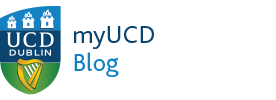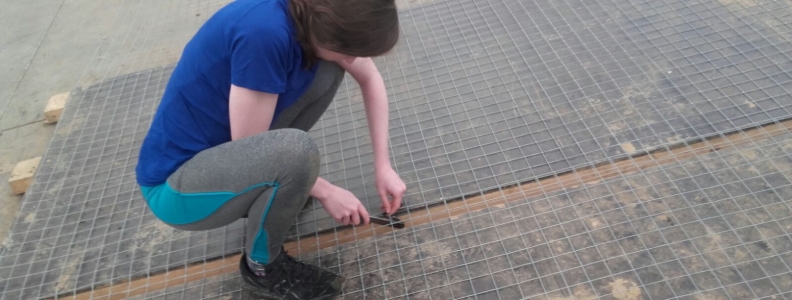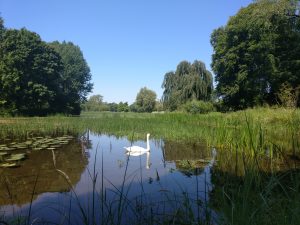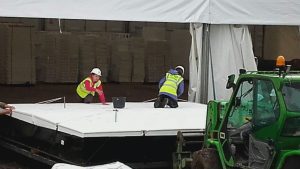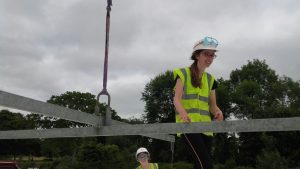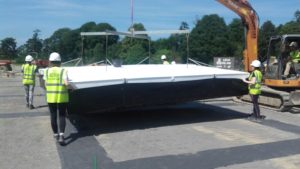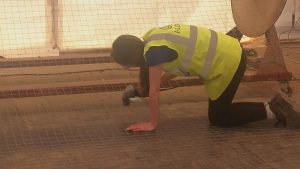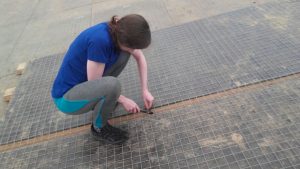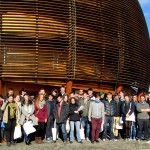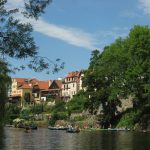UCD Physics with Astronomy & Space Science student Rachel Dunwoody writes the third in our series covering the construction of the I-LOFAR radio telescope in Birr.
In the last blog, Kevin explained how we built the HBAs (High Band Antennas) which was our focus for a few weeks down in Birr. As well as building the HBAs, they had to be laid out on the field. This blog will set out a typical day during the internship as part of the HBA deployment team.
7.20 am
Time to wake up (after a 20 minute snooze) and eat breakfast which was the only meal we had to prepare in Birr.
8.25 am
Our working day starts at 9:00 am but everyone aimed to be on-site from 8:50 am so we tried to leave the house at this time. We had to sign in and get our PPE (Personal Protective Equipment). Aside from the mandatory hard hat, hi vis and steel toed boots, there was often a need for a layer of either sun cream or waterproofs.
9.00 am
Once everyone was set for the day, there was a brief delegation of jobs and then we were set loose onto the site. One week, myself and Megan Weston from TCD were assigned the job of making the mirrors for the HBAs and helping with the deployment of the antennas. This was my favourite job as we got to spend time in the tent and outdoors. On sunny days, it became fairly sticky in the tent so it was great to escape to the breezy field. However, for the showery weather we weren’t stuck outside for the entire day. It was the best of both worlds.
9.00 am – 11.00 am
First we deployed 2 – 3 HBAs that had been completed the day before. The HBA tile had to be pushed on to the platform that sat on the prongs of a forklift. Kevin and I were part of the team that built the platform. Then 4 poles with sides that opened outward were placed into the tile which would lift the tile using the inner walls. Bungees from these poles were attached to the outer black sheet that held all the contents of the tile using clips.
Sean, one of the Conneely builders, would then drive it over and lay it onto the raised field. Megan and I would run around to meet the antenna. A harness was attached to an excavator. We ensured that the centre of the harness was centred on the HBA and then chains were attached so the tile could be lifted. Four of us would then walk the tile SLOWLY to the correct position in the field. A little manoeuvring was often needed to get the alignment precise. While it was being lowered, someone had to feed the two cables laid out in week one into the HBA through holes in the ground mat and connect them to the summation boards. This could be difficult as the mirror or black bag could move while the tile was being transported meaning that the small hole for the cable could be blocked. Once this was complete, the tile had to be covered using a top bag. Once the bag was in place atop the HBA, ‘’S’’ hooks on the bags were hooked into loops attached to steel anchors that had been drilled into the ground.
11.00 am – 12.50 pm
The mirrors for the HBAs were 5m x 5m grids to reflect radio waves of a long wavelength. Making the mirrors for the HBA required a handheld metal cutting machine. We had to learn how to cut along the mesh so it had a smooth edge that wouldn’t puncture the ground bags. The mesh was rolled out until the marker was reached, then cut. Once this was completed that part of the mirror had to be rotated and then another segment of the same size had to be cut and rotated. The two segments were aligned so that one square overlapped. These were twisted together using Hans’ magical tool – no one knew what to call it. Hans was one of the ASTRON supervisors that helped us during the build. We always tried to have at least two mirrors ready so the HBA building wouldn’t be held up.
12.50 pm – 1.50 pm
Lunch time! We would all sign out and walk up to the café for our well-earned bottle of cold Ballygowan water, bit of fruit and freshly made sandwich or wrap. On a sunny day this would inevitably be followed by an ice cream from the café with competition over who got the largest!
2.00 pm
Back on-site, signed in and equipment on for more deploying of the HBAs interspersed with mirror making for myself and Meg. We would also help making the components of the HBA tiles that Kevin discussed in his last blog.
5.00 pm
This was the cut-off time for deploying HBAs as the builders went home. At this point Megan and I would ensure we had an ample number of mirrors for the next day and would often hop into a HBA to help finish up the tile before the day’s work was done.
6.00 pm
Once the tiles were finished up, the tent cleaned out and rubbish brought up to the shed, it was time to head home for a hot dinner and much needed showers.
8.00 pm
The evening was most often spent in the sitting room with guitars, games and sometimes a movie. For the girls of the house, smores and some colouring was part of an average evening, as well as spider catching… One night there was 5 in my room!
Being part of this project was a unique and rewarding experience and I’m very grateful to have been chosen as a member of the team. In the last instalment of the I-LOFAR blogs, Kevin will tell you all about the making of the LBAs and the switching on ceremony in Birr that marked the end of our part in the I-LOFAR story.

